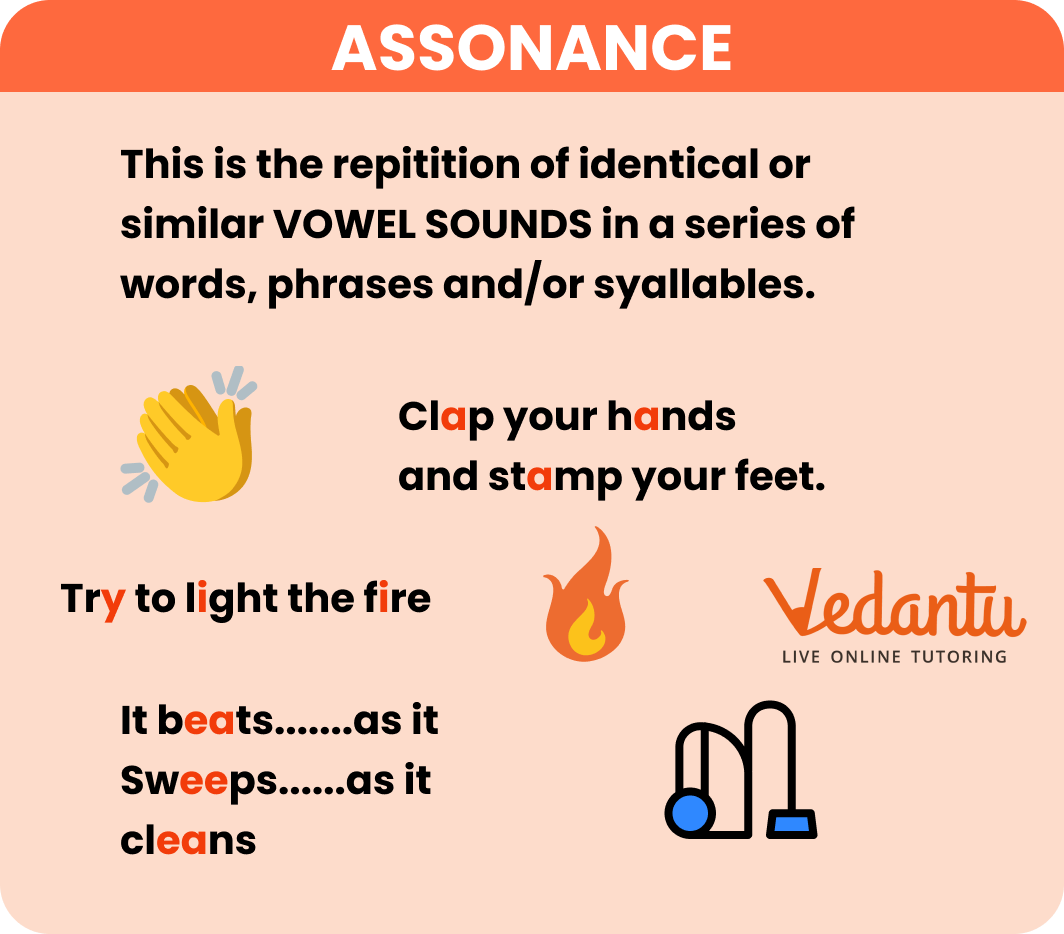




What are Assonance Examples, Definition, and Meaning
FAQs on Assonance: How Repeated Vowel Sounds Create Musicality in Language
1. What is Assonance?
Assonance is the repetition of vowel sounds within closely placed words in a sentence or phrase. It is often used in poetry and prose to create rhythm and enhance the musical quality of the text.
2. What is the definition of assonance and examples?
Assonance is defined as the repetition of vowel sounds in nearby words, especially within the same line of poetry. For example, in the phrase "The rain in Spain stays mainly in the plain," the repeated 'a' sound demonstrates assonance.
3. Can you provide some assonance examples?
Certainly! Examples of assonance include:
"Hear the mellow wedding bells" – Edgar Allan Poe
"The cat ran after the fat rat" – The repetition of 'a' sound
"The moon is a balloon" – The repetition of 'oo' sound
4. What is assonance in literature?
In literature, assonance refers to the repetition of vowel sounds within words that are close to each other, enhancing the musicality and rhythm of the text. It is often used to create a harmonious effect.
5. Can you give examples of assonance sentences?
Assonance examples sentences :
"The early bird catches the worm." – The repetition of 'e' sound
"A host of golden daffodils." – The repetition of 'o' sound
6. What is assonance and how is it used?
Assonance is the repetition of vowel sounds in nearby words to create a sense of rhythm and musicality. It is used in poetry and prose to enhance the auditory appeal of the text.
7. What are assonance examples in poetry?
Examples of assonance in poetry include:
"The wind blew in the windmill" – The repetition of 'i' sound
"Silly Willy went to the city" – The repetition of 'i' sound
8. How do you identify assonance in a sentence?
To identify assonance, look for repeated vowel sounds in nearby words. These sounds can be within the same line or sentence, creating a musical effect.
9. What is the role of assonance in poetry?
Assonance enhances the musical quality of poetry by repeating vowel sounds, which can create rhythm, mood, and a pleasing auditory effect for the reader.
10. Can you provide more assonance definition and examples?
Assonance is the repetition of vowel sounds within words close to each other. For example:
"The green leaves under the trees" – The repetition of 'e' sound
"A case of rain in Spain" – The repetition of 'a' sound























